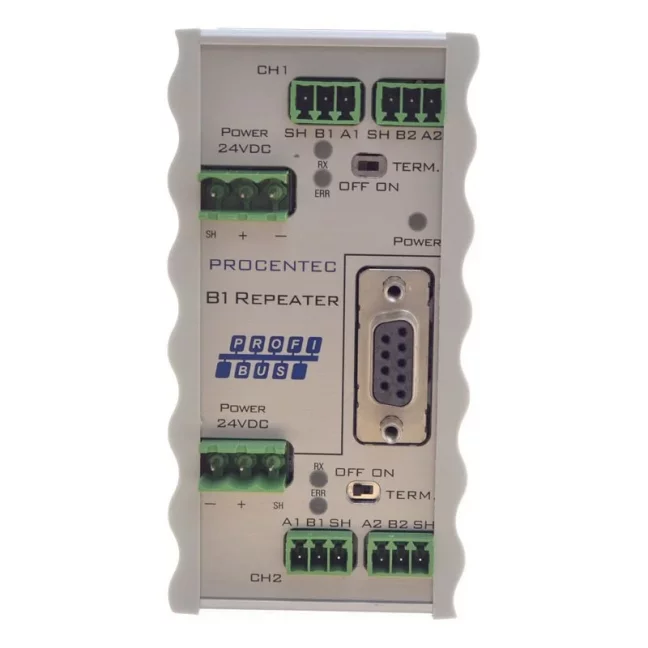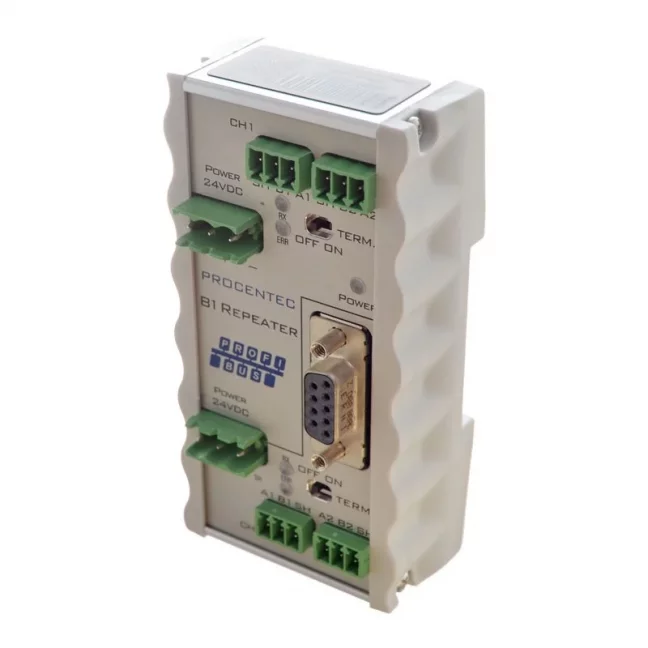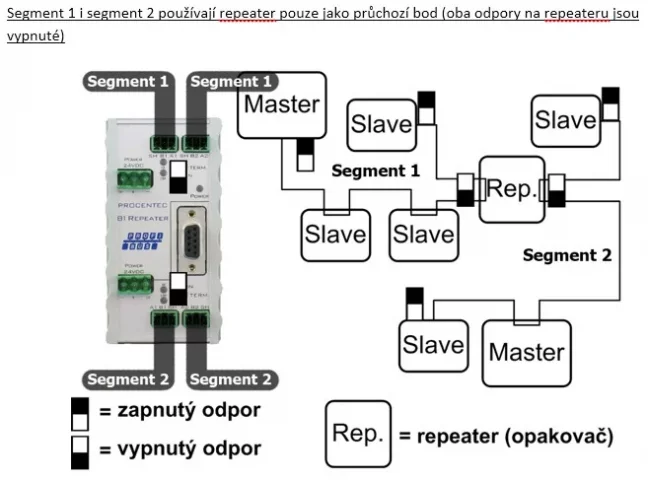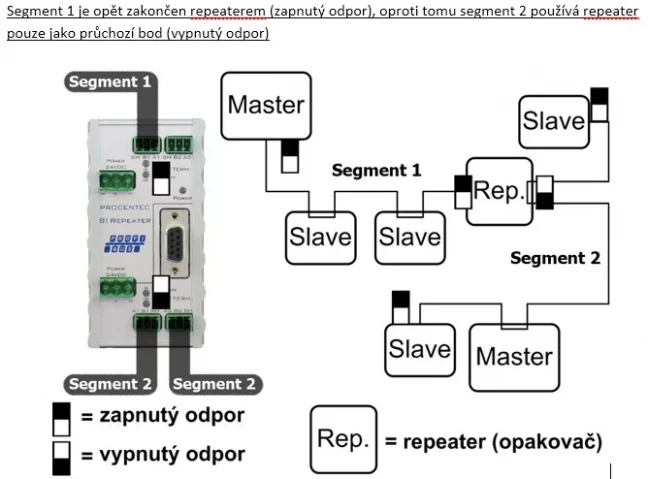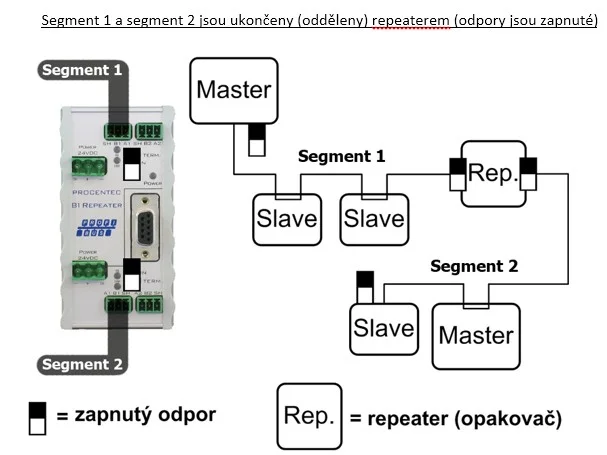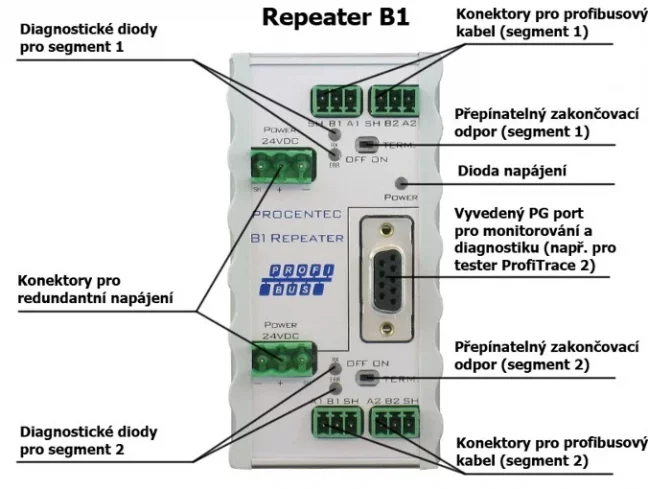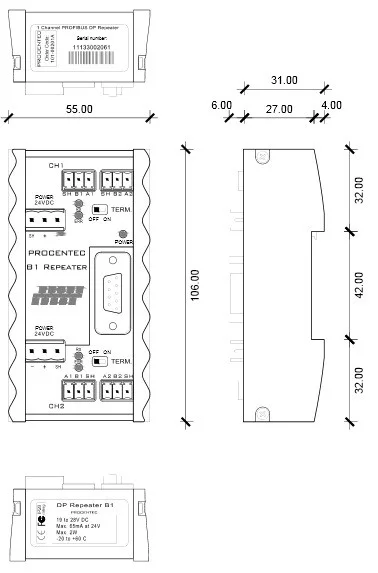B1 PROFIBUS DP repeater
- PROFINET, PROFIBUS, CAN
- PROFIBUS
- Repeater / multirepeater
- B1 PROFIBUS DP repeater
B1 PROFIBUS DP repeater
The repeater allows you to split one segment into two galvanically isolated segments, thus enabling you to add more PROFIBUS stations to the network and extend the cable length. In addition, the B1 amplifies the signal and filters out glitches between both segments, which helps to improve the robustness of the network. The repeater does not have its own PROFIBUS address and its installation does not require any changes to the hardware configuration in the program of the Master. More
Manufacturer: HMS Industrial Networks Code: 101-00201A
The repeater allows you to split one segment into two galvanically isolated segments, thus enabling you to add more PROFIBUS stations to the network and extend the cable length. In addition, the B1 amplifies the signal and filters out glitches between both segments, which helps to improve the robustness of the network. The repeater does not have its own PROFIBUS address and its installation does not require any changes to the hardware configuration in the program of the Master. More
Manufacturer: HMS Industrial Networks Code: 101-00201A
Best compact PROFIBUS repeater
An excellent repeater for PROFIBUS DP networks that is far ahead of the competition thanks to its parameters. The advanced 12 Mbps core of the B1 is comparable to the ProfiHub: it can be cascaded without limitations and has increased RS 485 strength. Furthermore, every channel has on-board switchable termination and is able to drive 31 devices. The removable screw terminals of the PROFIBUS interface are pinned-out in a way that reversed mounting of the repeater does not impact existing wiring. A DB9 connector is provided to connect diagnostic tools. The redundant power supply increases reliability of the application.
This compact and easy to use network component complies with the requirements of the demanding modern industry to increase the PROFIBUS cable length and amount of connected devices.
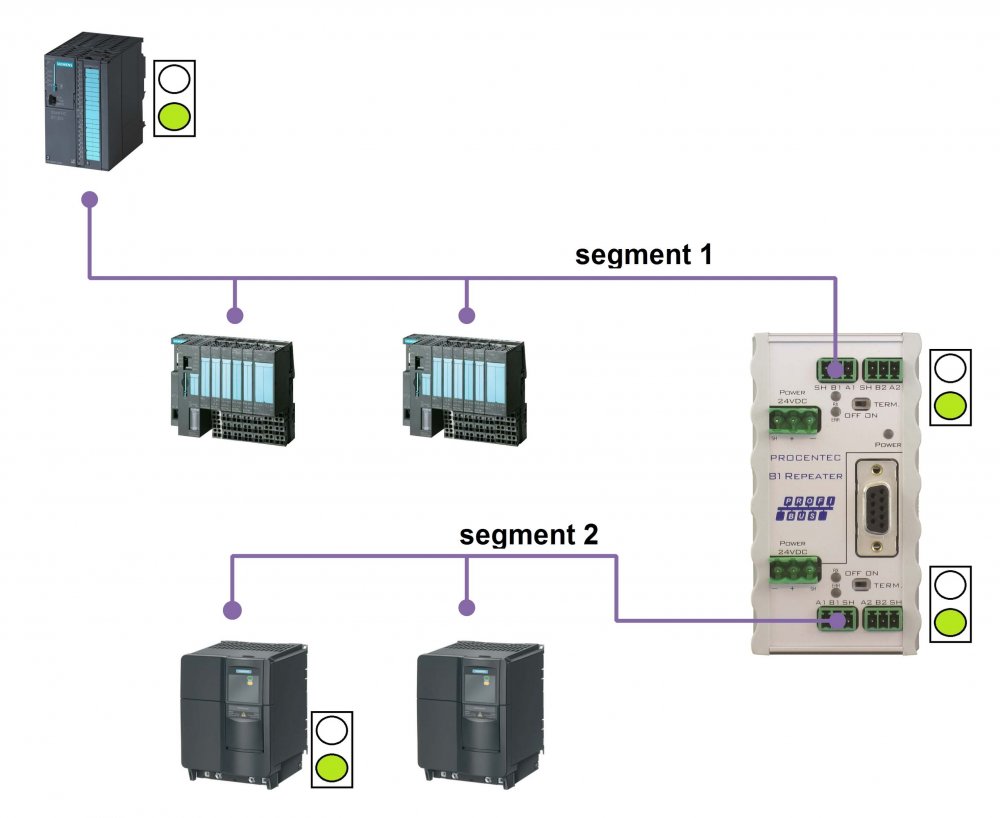
Basic wiring diagram of PROFIBUS repeater B1. The repeater terminates the first PROFIBUS segment 1 and creates a new PROFIBUS segment 2. The PRFIBUS network is strengthened, more stable and more robust.
More benefits
- Extendable installations
- Recovery of corrupted data bits
Features
- Suitable for all DP cables
- Low power consumption
- Redundant power supply
- No address required
- No limit in cascading
- Short circuit protection on each segment
- Integrated termination (switches)
- Removable screw terminals and a DB9 connector
- Monitoring port on outgoing segment
- IP20
- UL listed
- CE declared
- FCC verified
Signal Strength From Available Stations Before and After Installing the B1 Repeater
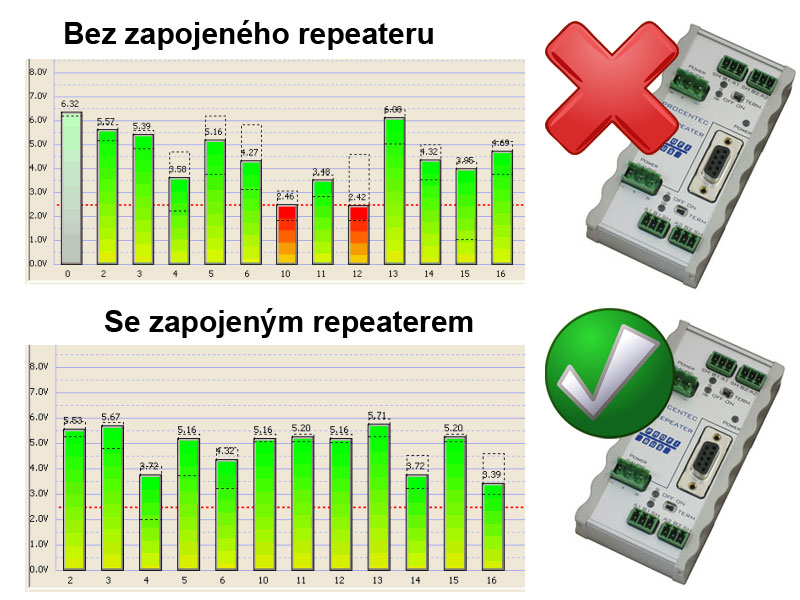
Demonstration of signal quality at PROFIBUS stations in a small network. Above is the network without the connected repeater, below is the network after connecting the B1 repeater.
Preferably less PROFIBUS stations in the segment
Based on our experience, we recommend that customers do not have up to 31 PROFIBUS stations per segment, because 31 stations means 31 potential causes of problems that can cause signal reflections in the PROFIBUS cable. This reflection increases with the length of the segment and eventually becomes so large that it usually shuts down the farthest station. We therefore recommend our customers to deploy a maximum of 5-10 PROFIBUS stations in one segment, then connect a B1 repeater and another segment with 10 stations, etc. This will significantly reduce the time to find the error in case of problems with the PROFIBUS network, because the cause and effect can usually be found in only one segment.
How many repeaters to install?
A new segment is created with each newly installed PROFIBUS repeater. If you have a larger PROFIBUS network and e.g. 3 repeaters installed in it, then you have a total of 4 galvanically separated segments in the network. This is correct from the point of view of signal strength, but it often happens that the PROFIBUS network is actually not clear, you do not know which stations are in which segment, and in the case of measurements it is more difficult to map exactly in which segment you are measuring and which stations are part of it. The worst situation occurs during an outage, because then this opacity is compounded by the pressure to ramp up production, and it's trouble.
We recommend that our customers install a maximum of 2-3 classic PROFIBUS B1 repeaters in one network so that they always have a clear overview of what is connected where.
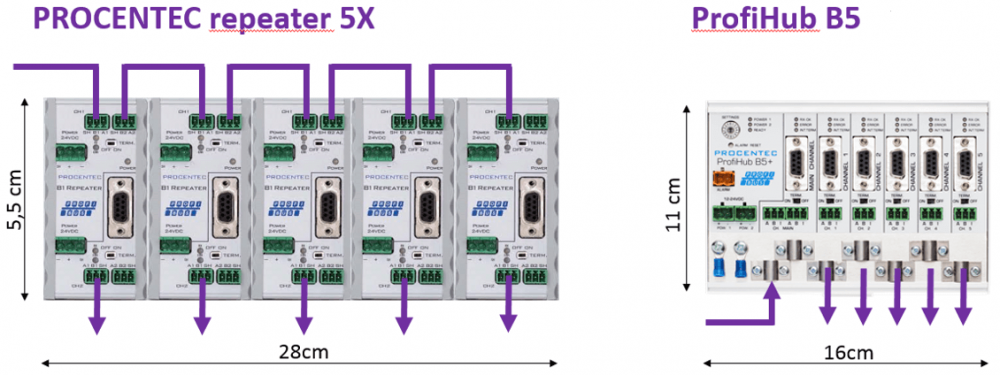
Comparison of the dimensions of the B1 repeaters in a star. This wiring is not recommended and it is better to choose multi-repeater ProfiHub B2 or B5.
If you need to install multiple PROFIBUS repeaters, consider deploying a ProfiHub multirepeater instead. The ProfiHub is the ideal tool for connecting a PROFIBUS network into a star because you take up less space on the DIN rail, you have an extra connection point for each channel and it is a more cost-effective solution.
Compared to what, you ask? In our measurements, we often find multiple classical PROFIBUS repeaters connected to each other, i.e. the upper part is interconnected and the individual galvanically separated PROFIBUS branches from the lower segments go out to the technology. In this way, it is possible to make a star connection, but it is an unfortunate solution in all respects.
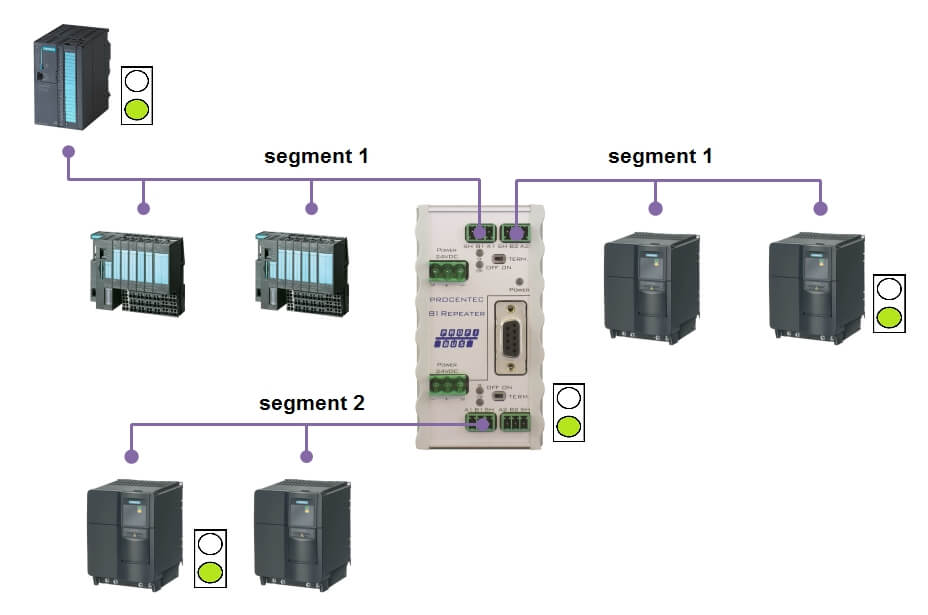
Example of the wiring of the PROFIBUS repeater B1, where the upper segment 1 is through and only the lower segment 2 is galvanically isolated.
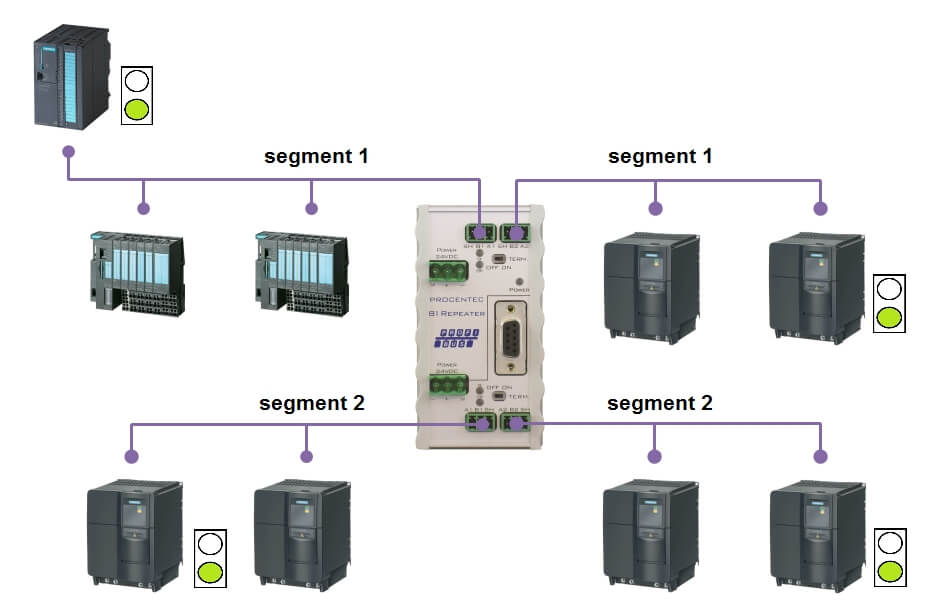
Wiring example of the PROFIBUS repeater B1, where the upper segment 1 is through and the lower segment 2 is also through. The entire segment 1 is galvanically separated from segment 2.
Highlighted items are mandatory.
